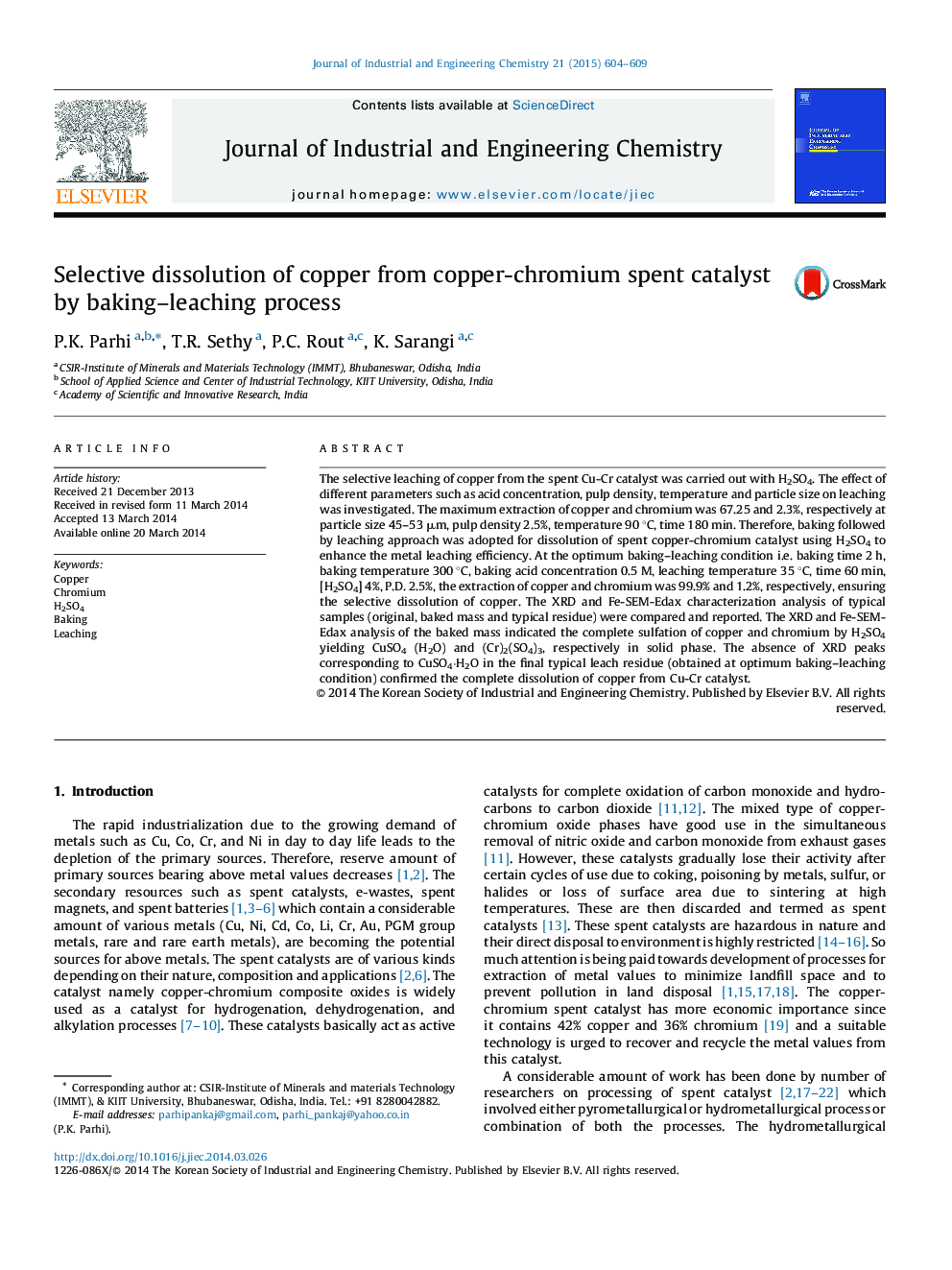| کد مقاله | کد نشریه | سال انتشار | مقاله انگلیسی | نسخه تمام متن |
|---|---|---|---|---|
| 226957 | 464811 | 2015 | 6 صفحه PDF | دانلود رایگان |
• Direct leaching followed by baking–leaching of spent Cu-Cr catalyst was carried out using H2SO4 solution.
• Copper and chromium leaching was maximized up to 67.25% and 2.3%, respectively, at optimum direct leaching condition.
• Baking–leaching route was found to be very effective on selective and quantitative (99.9%) dissolution of copper at ambient temperature condition.
• Phase transformation taking place during baking and after baking–leaching was ascertained by XRD and Fe-SEM study.
• Fe-SEM-Edax results further assured on phase transformation as well as elemental essay of corresponding analyzed samples.
The selective leaching of copper from the spent Cu-Cr catalyst was carried out with H2SO4. The effect of different parameters such as acid concentration, pulp density, temperature and particle size on leaching was investigated. The maximum extraction of copper and chromium was 67.25 and 2.3%, respectively at particle size 45–53 μm, pulp density 2.5%, temperature 90 °C, time 180 min. Therefore, baking followed by leaching approach was adopted for dissolution of spent copper-chromium catalyst using H2SO4 to enhance the metal leaching efficiency. At the optimum baking–leaching condition i.e. baking time 2 h, baking temperature 300 °C, baking acid concentration 0.5 M, leaching temperature 35 °C, time 60 min, [H2SO4] 4%, P.D. 2.5%, the extraction of copper and chromium was 99.9% and 1.2%, respectively, ensuring the selective dissolution of copper. The XRD and Fe-SEM-Edax characterization analysis of typical samples (original, baked mass and typical residue) were compared and reported. The XRD and Fe-SEM-Edax analysis of the baked mass indicated the complete sulfation of copper and chromium by H2SO4 yielding CuSO4 (H2O) and (Cr)2(SO4)3, respectively in solid phase. The absence of XRD peaks corresponding to CuSO4·H2O in the final typical leach residue (obtained at optimum baking–leaching condition) confirmed the complete dissolution of copper from Cu-Cr catalyst.
Journal: Journal of Industrial and Engineering Chemistry - Volume 21, 25 January 2015, Pages 604–609
